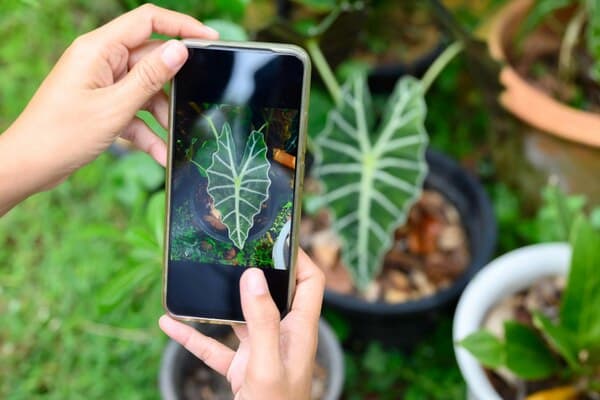Application for identifying plants can be challenging, especially for those who are not experienced botanists. Fortunately, with the advancement of technology, there are several applications to identify plants that facilitate this task. These apps not only help you recognize different plant species but also provide detailed information about them. In this article, we will explore some of the best apps available for plant identification, discussing their features and benefits.
Next, we will present a list of recommended applications to identify plants, detailing their characteristics and how each one can be useful in different situations. This guide is ideal for gardeners, plant enthusiasts, and anyone interested in botany. Let's find out how these apps can transform your experience with nature.
The Best Apps to Identify Plants
Application to identify plants has never been easier with the help of the right applications. These apps use artificial intelligence, extensive databases, and even user communities to provide accurate and fast identifications. Here are some of the best apps available on the market.
PlantSnap
PlantSnap is one of the most popular apps for identifying plants. Using your smartphone's camera, it can instantly identify more than 600,000 species of plants, flowers, trees, succulents, mushrooms and more. Additionally, the app offers a global community where users can share their discoveries and learn from each other. So, in addition to identifying plants, you can expand your botanical knowledge in an interactive way.
PictureThis
Another highly recommended app is PictureThis. With an accuracy rate of 99%, PictureThis stands out for its speed and accuracy in plant identification. The app not only identifies the plant, but also provides care tips, information about pests and diseases, and allows you to keep a record of identified plants. This way, you can monitor the health and development of your plants over time.
PlantNet
PlantNet is a collaborative project involving botanists and scientists around the world. This app is great for those who want to contribute to citizen science while identifying plants. Simply take a photo of the plant and PlantNet will compare it to its vast database to provide an identification. Additionally, you can participate in specific projects and help with global botanical research, making your experience even more enriching.
iNaturalist
iNaturalist is more than a simple plant identification app; is a community of naturalists and scientists. Created by a partnership between the California Academy of Sciences and the National Geographic Society, iNaturalist allows users to share their observations of plants and animals. The application's artificial intelligence suggests identifications and the community of experts confirms or corrects them, providing collaborative learning.
Seek by iNaturalist
Seek by iNaturalist is ideal for children and botany beginners. With a friendly, gamified interface, Seek makes plant identification fun and educational. By identifying plants, users earn badges and points, encouraging exploration and continued learning. Additionally, the app does not require an account to use, making it accessible for all ages.
Garden Answers
Finally, Garden Answers is an application focused on solving specific questions about gardening and plant identification. In addition to identifying plants through photos, it offers a database with answers to frequently asked questions about plant care, pests and diseases. This makes it a valuable tool for gardeners looking for quick, accurate solutions to their gardening problems.
Functionalities of Plant Identification Applications
Applications for identifying plants offer a variety of functionalities that go beyond simple identification. Firstly, many of these apps have extensive databases that contain detailed information about thousands of plant species. Furthermore, some apps, such as PlantNet and iNaturalist, allow users to contribute their observations, further enriching the available data.
Another important point is the integration of educational resources. Apps like Seek by iNaturalist use gamification elements to make learning fun and engaging. On the other hand, PictureThis and Garden Answers provide practical plant care advice, helping users keep their plants healthy and beautiful.
Additionally, most of these applications use artificial intelligence to improve the accuracy of identifications. This means that the more users use the application, the more accurate identification becomes, benefiting all users.

Conclusion
In conclusion, the applications to identify plants They are essential tools for any nature lover. They not only make plant identification easier, but they also educate and connect people with similar interests. With a range of functionality, from extensive databases to educational and community resources, these apps make the botanical experience accessible and fun for everyone. So, explore the aforementioned apps and discover a new world of knowledge and appreciation for the plants around you.





